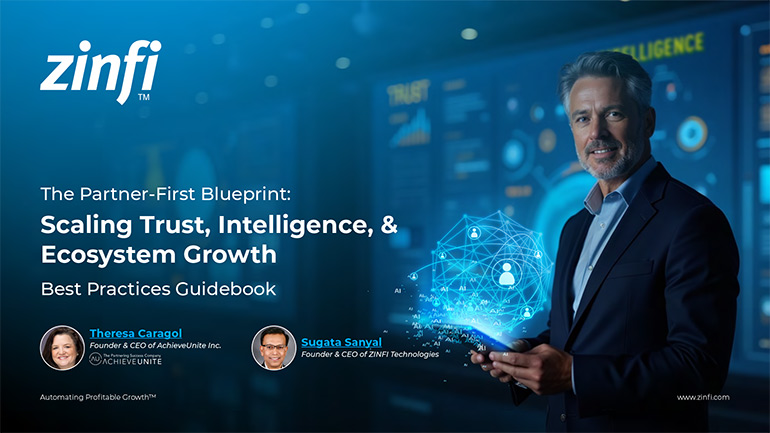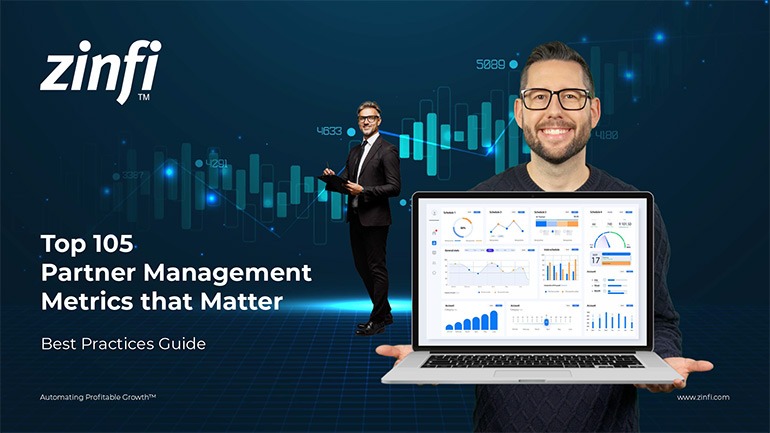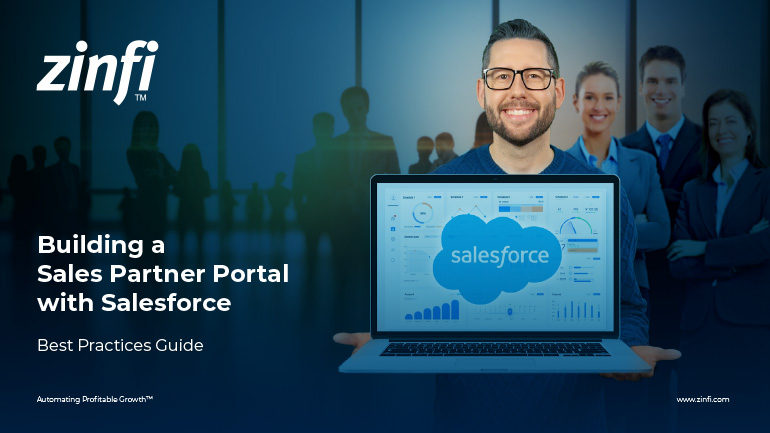Best Practices Articles

Driving Mid-Market Growth Through Strategic Partner Marketing
Partner marketing has become essential for driving B2B revenue growth, particularly in the mid-market technology sector. As technology companies navigate growing competition, compressed sales cycles, and rising customer acquisition costs, channel-centric strategies have moved from the sidelines to the forefront. The shift isn't a mere trend—it reflects a more profound transformation in how mid-sized organizations discover, evaluate, and purchase technology solutions.
The mid-market sits in a uniquely challenging position. Buyers in this segment demand enterprise-grade experiences without enterprise-level bureaucracy. They expect relevance, speed, and value, often within tightly managed marketing and procurement frameworks. This reality requires partner marketing to evolve beyond simple co-branding or MDF disbursements. Vendors must equip their partners—primarily managed service providers (MSPs), value-added resellers (VARs), and cloud solution providers—with high-precision tools, ready-to-launch campaigns, and clear ROI models.
Partner marketing in the mid-market cannot rely on passive lead sharing or sporadic outreach. It must offer intentional alignment with sales goals, a cadence that reflects real buying cycles, and omnichannel execution that meets prospects where they are. The most successful organizations approach partner marketing as a growth engine that creates scalable, repeatable outcomes across diverse geographies, verticals, and personas.
This article explores the critical components that drive mid-market success through partner marketing. From campaign structure and sales alignment to execution scalability and AI-enabled insights, it lays out a framework for channel leaders committed to delivering partner programs that convert. Every insight shared here reflects a decade of hands-on experience scaling partner ecosystems in technology markets that expect both performance and precision.
1. Decoding the Mid-Market Landscape for Partner Marketing
Understanding the nuances of the mid-market is foundational to executing effective partner marketing. This customer segment—spanning organizations with 100 to 1,000 employees—functions with structured buying processes yet maintains flexibility in decision-making. This duality presents both opportunities and challenges for marketers. Campaigns must be highly relevant and delivered with agility.
Partner marketing that targets mid-market buyers must go beyond generic content blasts. It must demonstrate a deep understanding of role-specific pain points, vertical-specific trends, and solution-driven outcomes. Buyers expect messages that reflect their reality. They ignore the noise and engage only with offers that resonate across strategic, operational, and financial dimensions. Therefore, precision targeting and messaging personalization are non-negotiable.
Technology vendors often overlook the complexity of this segment by pushing one-size-fits-all partner marketing playbooks. That approach fails. Success comes from recognizing that many partners lack internal marketing resources, especially in the mid-market channel. They depend heavily on vendors for campaign structure, lead management workflows, and post-lead engagement support.
To deliver value, partner marketing programs must embed components that support the entire buyer journey. This includes campaign kits, verticalized content, email sequences, outbound calling scripts, and social media assets—all optimized for speed and relevance. More importantly, vendors must provide clarity on execution steps. Partners should never have to guess how to run the campaign, who to target, or what success looks like.
Equally important is addressing conversion gaps. Many partners excel at relationship selling but struggle to operationalize lead nurturing. Vendors must design partner marketing programs anticipating this shortfall and integrate resources like business development reps (BDRs) or appointment setters who can convert marketing-qualified leads into sales conversations.
Vendors can ensure their partner marketing efforts produce meaningful outcomes by aligning messaging, tools, and processes with mid-market buying behavior. This alignment creates trust, enables faster execution, and accelerates the path from awareness to revenue.
2. Engineering Partner Marketing for ROI-Driven Outcomes
Mid-market partner marketing only delivers value when it translates into measurable pipeline and revenue growth. Many vendors fall short by focusing on marketing activity rather than marketing impact. To avoid this pitfall, campaign design must begin with a clear definition of return on investment.
ROI-centric partner marketing starts with funnel modeling. If a sales team needs 100 appointments to close 15 deals, and the average deal size is $30,000 annually, then each appointment holds a potential value of $4,500. This insight sets the acceptable cost per lead, guides investment planning, and determines viable tactics.
Partners often face capital constraints. They want results but lack the upfront budget to experiment. Vendors must provide partner marketing options that scale up or down based on available investment while delivering positive ROI. For example, a $10,000 monthly campaign targeting a $30,000 SaaS product with a three-month sales cycle should include outbound teleprospecting, digital nurturing, and targeted advertising tailored to produce qualified sales meetings.
Instead of distributing static campaign funds across numerous disconnected tactics, vendors must help partners focus. Well-structured partner marketing initiatives prioritize channels with the highest yield—email, LinkedIn, paid search, and outbound calling—and support them with landing pages and CRM-integrated workflows.
Transparency also drives ROI. Vendors must share dashboards that track every engagement stage: opens, clicks, conversions, appointments, and deal progression. By delivering real-time insights, partner programs empower teams to double down on what works and pivot quickly when needed. This data-first approach ensures partner marketing programs earn long-term investment.
Moreover, the vendor-partner relationship must evolve into a co-execution model. Success happens when both parties own pipeline generation. Partner marketing programs must reflect this shared accountability by aligning KPIs, agreeing on conversion benchmarks, and designing lead follow-up cadences that close the loop between marketing and sales.
The future of ROI in partner marketing belongs to those who engineer campaigns backward—from deal velocity, not creative concepts.
3. Scaling Partner Enablement Across the Ecosystem
Partner marketing reaches its full potential when it moves beyond isolated campaigns and becomes a repeatable engine for growth. This transition demands scale—not just in volume, but in enablement. Vendors must equip hundreds or thousands of partners to execute with speed, consistency, and quality.
Infrastructure lays the foundation. A dedicated growth platform—built for partner marketing—can centralize asset access, campaign management, lead tracking, and performance reporting. Partners need a single pane of glass to plan, launch, and manage campaigns. Without it, execution becomes fragmented and inconsistent.
Standardization also plays a critical role. While personalization increases conversion, too much customization becomes a bottleneck. Vendors should offer templated, high-converting campaign kits that partners can tailor within boundaries. A strong partner marketing platform allows content editing within approved frameworks, maintaining brand integrity without sacrificing relevance.
The training closes the capability gap. Many partners lack full-time marketers. Vendors must offer onboarding workshops, video walkthroughs, campaign launch guides, and optional concierge support. Certification programs can further reinforce execution excellence and recognize top-performing partners.
A significant component of scalable partner marketing involves demand orchestration. Vendors should provide “white-glove” services—such as outsourced BDRs, list procurement, and appointment setting—to help partners execute consistently. These services amplify campaign reach while minimizing partner burden, especially for those with limited staff.
Funding mechanisms must also support scale. Market development funds, rebates, or co-op programs should reward outcomes, not just participation. Partners become more committed when partner marketing funding aligns with conversion metrics—such as SQLs or held appointments—and outcomes improve.
The key to scalable partner marketing lies in balancing autonomy with structure. Vendors must empower partners to execute independently but within a guided framework that ensures campaign success.
4. Solving Common Mid-Market Barriers in Partner Marketing Execution
Execution presents the most significant challenge in mid-market partner marketing. Even well-funded campaigns can underperform if not managed with discipline. The first barrier is list quality. Outdated, incomplete, or irrelevant contact data wastes the budget and frustrates partners. Vendors must offer access to high-quality, enriched databases aligned with ideal customer profiles.
Second, many partners fail to follow up on leads with persistence. While some reach out once or twice, few maintain the 6–8 touches often required to convert a mid-market lead. Partner marketing must solve this by embedding BDRs or creating automated nurture sequences that ensure follow-up happens.
Compliance issues also pose execution risks. Partners operating in regions like Europe face GDPR constraints that limit outbound outreach. Vendors must provide compliant list sources, opt-in frameworks, and consent-based workflows. Partner marketing campaigns must follow regional laws without losing momentum.
Internal bandwidth presents another challenge. Many partners juggle multiple responsibilities. Vendors can ease this burden through campaign concierge services, outsourced calling, or simplified launch processes. Partner marketing tools must streamline campaign activation—not add administrative load.
A final execution gap lies in expectations. Many partners overestimate what small budgets can achieve. Vendors must guide partners on realistic outcomes. A $5,000 campaign won’t generate 50 appointments, but it may validate messaging, test a new vertical, or generate a handful of SQLs. Partner marketing success requires expectation alignment as much as execution support.
By proactively addressing these obstacles, vendors can ensure that partner marketing efforts consistently deliver value.
5. Innovating Partner Marketing with AI and Omnichannel Integration
Partner marketing continues to evolve rapidly. Introducing AI-powered tools, advanced analytics, and omnichannel automation reshapes how vendors and partners engage prospects. Given its scale and agility, the mid-market is an ideal testing ground for these innovations.
AI enhances personalization. Machine learning algorithms analyze buyer behavior, recommend content, and predict optimal outreach timing. AI enables more efficient targeting, better timing, and higher conversion rates when embedded into partner marketing platforms. Partners can use AI to prioritize leads, tailor messages, and improve real-time call scripts.
Omnichannel strategies further boost performance. Mid-market buyers engage across email, web, social, and phone. Partner marketing must integrate these touchpoints seamlessly. A unified campaign might retarget visitors who downloaded a whitepaper with LinkedIn ads, then follow up with a call two days later. This sequence creates familiarity, builds trust, and increases conversion odds.
Emerging capabilities—such as reverse IP tracking, content scoring, and predictive scoring—allow vendors to equip partners with enterprise-grade insights. These tools turn anonymous website traffic into named leads, qualify those leads based on behavior, and deliver them to partners with action-ready data.
Moreover, partner marketing will increasingly rely on intelligent automation. Partners don’t have time to log into multiple systems. Intelligent workflows that automatically enroll leads, trigger follow-ups, and update CRM entries will make campaigns easier to run and more impactful.
AI will not replace partner marketers. Instead, it will enhance their capacity to drive results. The vendors who invest in AI-driven infrastructure will empower their partners to operate like well-funded marketing teams—without the overhead.
Partner marketing must continue to embrace innovation—not as a gimmick but as a strategy for creating consistent, predictable revenue growth.
Conclusion
Partner marketing in the mid-market technology sector represents one of the most powerful levers for growth. However, it is not enough to distribute content or offer occasional co-funding. True success comes from engineering a repeatable system that aligns execution with buyer behavior, investment with outcomes, and innovation with operational ease.
Vendors who take partner marketing seriously understand its strategic value. They equip their partners with the tools, support, and data needed to execute at a high level. They invest in platforms that centralize workflows, train their ecosystem continuously, and embed ROI measurement into every campaign. And most importantly, they treat partners as collaborators, not contractors.
Mid-market buyers expect speed, personalization, and proof of value. Partner marketing must deliver all three. The organizations that master this discipline will not only outgrow their peers—they will redefine what effective channel strategy looks like in the years ahead.
Best Practices Guidebook
 The Partner-First Blueprint: Scaling Trust, Intelligence, and Ecosystem Growth
The Partner-First Blueprint: Scaling Trust, Intelligence, and Ecosystem GrowthDownload Guide
 Unlock Scalable Growth with The Partner Marketing Growth Blueprint
Unlock Scalable Growth with The Partner Marketing Growth BlueprintDownload Guide
 From TikTok to LinkedIn: Social Selling Across the Generational Divide
From TikTok to LinkedIn: Social Selling Across the Generational DivideDownload Guide
 Scaling Partner Ecosystems: From Enablement to Intelligence
Scaling Partner Ecosystems: From Enablement to IntelligenceDownload Guide
 The Ultimate Guide to Partner Marketing Success Best Practices
The Ultimate Guide to Partner Marketing Success Best PracticesDownload Guide
 How to Start and Scale Partner Ecosystems Best Practices
How to Start and Scale Partner Ecosystems Best PracticesDownload Guide
 The Evolution of PartnerOps: Past, Present & Future Best Practices
The Evolution of PartnerOps: Past, Present & Future Best PracticesDownload Guide
 Mastering Channel Sales: Strategies, Best Practices, and Growth Tactics for 2025
Mastering Channel Sales: Strategies, Best Practices, and Growth Tactics for 2025Download Guide
 Winning with Partner Advisory Councils: Best Practices for Partner Engagement & Growth
Winning with Partner Advisory Councils: Best Practices for Partner Engagement & GrowthDownload Guide
 The Future of Partner Ecosystems Best Practices
The Future of Partner Ecosystems Best PracticesDownload Guide
 The AI Revolution: How Technology and Talent are Shaping the Future
The AI Revolution: How Technology and Talent are Shaping the FutureDownload Guide
 Top 105 Partner Management Metrics that Matter Best Practices
Top 105 Partner Management Metrics that Matter Best PracticesDownload Guide
 Mastering PRM Integration Best Practices
Mastering PRM Integration Best PracticesDownload Guide
 Building a Sales Partner Portal with Salesforce Best Practices
Building a Sales Partner Portal with Salesforce Best PracticesDownload Guide
 Building and Managing Partner Ecosystems Best Practices
Building and Managing Partner Ecosystems Best PracticesDownload Guide
 Mastering Co-Marketing and Co-Selling Best Practices
Mastering Co-Marketing and Co-Selling Best PracticesDownload Guide
 Transforming Partner Ecosystems Best Practices
Transforming Partner Ecosystems Best PracticesDownload Guide
 Mastering Partner Ecosystems Best Practices
Mastering Partner Ecosystems Best PracticesDownload Guide







